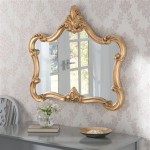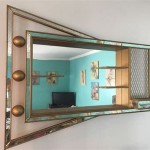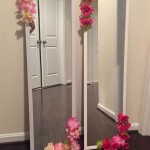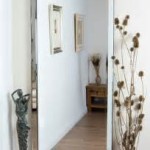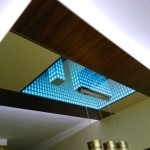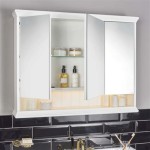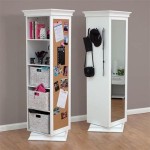How to Glue a Bathroom Mirror: A Comprehensive Guide
A bathroom mirror is an indispensable element of any functional and stylish bathroom. However, mounting a mirror securely requires careful consideration and the proper adhesive. This guide will provide you with a step-by-step process on how to glue a bathroom mirror effectively, ensuring a durable and aesthetically pleasing installation.
Materials Required:
- Bathroom mirror
- Mirror-specific adhesive
- Clean cloths
- Measuring tape
- Pencil or marker
- Level
- Caulking gun (optional)
- Caulk (optional)
Step 1: Prepare the Mirror and Wall
Clean the back of the mirror and the wall surface thoroughly using a clean cloth and an appropriate surface cleaner. Remove any dirt, dust, or oil to ensure proper adhesion.
Step 2: Mark the Mirror Placement
Measure the desired height and center the mirror on the wall. Use a pencil or marker to mark the outline of the mirror on the wall.
Step 3: Apply the Adhesive
Apply the mirror-specific adhesive evenly to the back of the mirror, following the manufacturer's instructions carefully. Avoid over-applying the adhesive, as excess can cause the mirror to slide or bulge.
Step 4: Position and Mount the Mirror
Carefully position the mirror on the wall, aligning it with the markings. Press firmly on the mirror and hold it in place for the specified amount of time, as indicated by the adhesive manufacturer.
Step 5: Level the Mirror (Optional)
Check the level of the mirror and adjust as necessary using leveling spacers or shims. This ensures that the mirror is perfectly level for a neat and professional appearance.
Step 6: Caulk Around the Edges (Optional)
If desired, apply a bead of clear silicone caulk around the edges of the mirror for additional moisture resistance and a sealed finish. Smooth the caulk with a damp finger or a caulk tool.
Step 7: Remove Excess Adhesive
After the adhesive has set, use a clean cloth or a razor blade to carefully remove any excess adhesive that may have oozed out from the edges of the mirror.
Tips:
- Always read and follow the specific instructions provided by the adhesive manufacturer.
- Use a mirror-specific adhesive designed for bathroom environments, as it will provide the best adhesion and moisture resistance.
- Avoid using liquid nails or other non-mirror-specific adhesives, as they may not provide sufficient adhesion and can damage the mirror.
- If the mirror is particularly heavy or large, consider using additional support mechanisms such as mounting brackets or anchor bolts.
By following these steps and using the appropriate materials, you can successfully glue a bathroom mirror that will remain secure and stylish for years to come.

How To Frame A Mirror With Clips Glue The Wall

How To Use Mirror Adhesive Silicone

How To Safely And Easily Remove A Large Bathroom Builder Mirror From The Wall Site Title

How To Remove A Mirror Glued The Wall Forbes Home

How To Frame A Mirror With Clips Glue The Wall

How To Safely And Easily Remove A Large Bathroom Builder Mirror From The Wall Site Title
What Is The Best To Use Glue Mirrors A Wall Quora

Mirror Frame Diy How To Update A Basic Bathroom Our Faux Farmhouse

Easy Diy Tutorial Adding Trim Around A Giant Mirror For Ers

How To Install A Mirror Without Frame Merrypad

